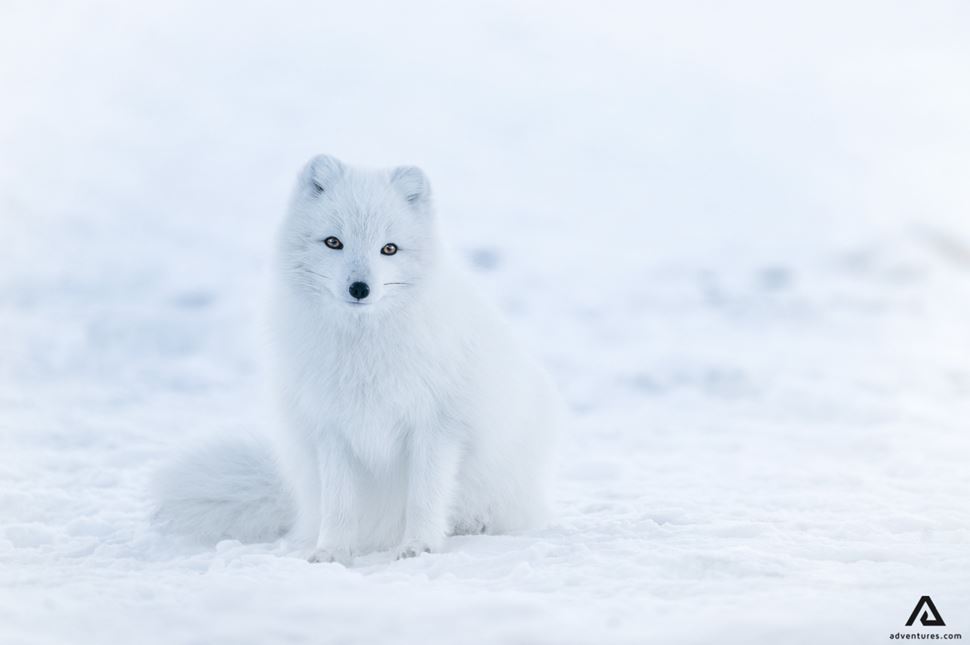The North Pole, an expanse of ice and frigid waters, hosts a surprisingly diverse array of wildlife. Despite the extreme cold and harsh conditions, several species have evolved extraordinary adaptations to survive and flourish. This article explores what animals live in the North Pole and highlights ten amazing adaptations that allow them to endure such a challenging environment.
What Animals Live in the North Pole: Polar Bears: Masters of Insulation
Polar bears are the largest land carnivores and are iconic residents of the North Pole. Their thick fur and substantial fat layers provide critical insulation against the freezing Arctic temperatures. Additionally, their fur is water-repellent, helping them stay dry and warm after swimming in icy waters. Their camouflage, blending with the snow and ice, aids in hunting seals, their primary prey.
What Animals Live in the North Pole: Arctic Foxes: Color-Changing Coats
Arctic foxes are well-known for their ability to change the color of their fur with the seasons. During winter, their coat turns white, blending with the snow, while in summer, it shifts to brown or grey, matching the tundra landscape. This seasonal adaptation not only helps them avoid predators but also aids in sneaking up on prey such as small rodents and birds.
What Animals Live in the North Pole: Narwhals: The Unicorns of the Sea
Narwhals are unique Arctic whales, often called “unicorns of the sea” due to their long, spiraled tusks. They navigate the Arctic waters, using these tusks to break through sea ice to access breathing holes. Narwhals have a thick layer of blubber that insulates them from the cold, allowing them to survive in temperatures that would be fatal to other marine mammals.
What Animals Live in the North Pole: Snowy Owls: Silent Hunters of the Arctic
Snowy owls are adapted to the Arctic cold with thick, insulating feathers that cover their entire bodies, including their legs and feet. These birds are skilled hunters, capable of silently gliding over the tundra to catch their prey, mainly lemmings. Their white plumage provides effective camouflage against the snowy background, making them less visible to predators.
What Animals Live in the North Pole: Walruses: Social Giants of the Arctic
Walruses are large marine mammals with wrinkled skin and a thick layer of blubber, providing insulation against the cold. They use their long tusks to help haul themselves onto ice floes and defend against predators. Walruses often congregate in large groups, which helps them conserve heat and provide mutual protection in the harsh Arctic environment.
What Animals Live in the North Pole: Arctic Terns: The Longest Migrators
Arctic terns are known for their incredible migratory journey, traveling from the North Pole to the South Pole and back annually. They spend the Arctic summer breeding and feeding on fish and small invertebrates. Their lightweight, aerodynamic bodies are built for long-distance flight, and they take advantage of continuous daylight during the Arctic summer to forage extensively.
What Animals Live in the North Pole: Ringed Seals: Ice-Dependent Divers
Ringed seals are the most common seals in the Arctic and are highly dependent on sea ice for their survival. They have small front flippers and strong claws, which they use to maintain breathing holes in the ice. Their thick blubber layer not only provides insulation but also serves as an energy reserve during the lean months of winter when food is scarce.
What Animals Live in the North Pole: Beluga Whales: The White Whales of the Arctic
Beluga whales, recognizable by their white coloration and bulbous heads, are well-adapted to the icy Arctic waters. They have a thick layer of blubber that insulates them from the cold and aids buoyancy. Belugas use echolocation to navigate and hunt under the ice, finding breathing holes and avoiding predators like polar bears and orcas.
What Animals Live in the North Pole: Musk Oxen: Woolly Survivors
Musk oxen are large, shaggy herbivores that roam the Arctic tundra. Their long, coarse outer hair protects a dense undercoat called qiviut, one of the warmest natural fibers in the world. This coat provides exceptional insulation against the bitter cold. Musk oxen form tight groups to conserve heat and protect themselves from predators such as wolves.
What Animals Live in the North Pole: Lemmings: The Arctic’s Small But Vital Rodents
Lemmings are small, mouse-like rodents that play a crucial role in the Arctic ecosystem. They have thick fur to keep warm and live in burrows beneath the snow to insulate themselves from the cold. Their population cycles significantly influence the numbers of predators like Arctic foxes and snowy owls, making them a keystone species in the Arctic food web.
Conclusion
What Animals Live in the North Pole, The animals that live in the North Pole have developed incredible adaptations to survive in one of the harshest environments on Earth. From the thick blubber of marine mammals to the color-changing fur of Arctic foxes, these adaptations highlight the resilience and ingenuity of life in extreme conditions. Understanding these adaptations gives us deeper insight into the challenges of Arctic survival and the delicate balance of this unique ecosystem.
FAQs
Q1. What animals live in the North Pole year-round?
Polar bears, Arctic foxes, ringed seals, and musk oxen are some of the animals that live in the North Pole throughout the year.
Q2. What Animals Live in the North Pole stay warm in such cold temperatures?
Arctic animals use a combination of physical adaptations like thick fur, blubber, and behaviors such as huddling together to retain body heat and stay warm.
Q3. Are there any birds that live in the North Pole?
Yes, birds such as snowy owls and Arctic terns live in the North Pole. Arctic terns migrate long distances, while snowy owls are year-round residents.
Q4. What role do lemmings play in the Arctic ecosystem?
Lemmings are crucial in the Arctic ecosystem as they are a primary food source for many predators. Their population size directly impacts the numbers of these predators.
Q5. How do marine mammals like narwhals and belugas survive in icy waters?
Marine mammals like narwhals and belugas have thick layers of blubber that provide insulation against the cold and help them survive in the icy waters of the Arctic.
Also read: Brown Penguin Wonders: 10 Fascinating Facts You Didn’t Know




Leave a Comment